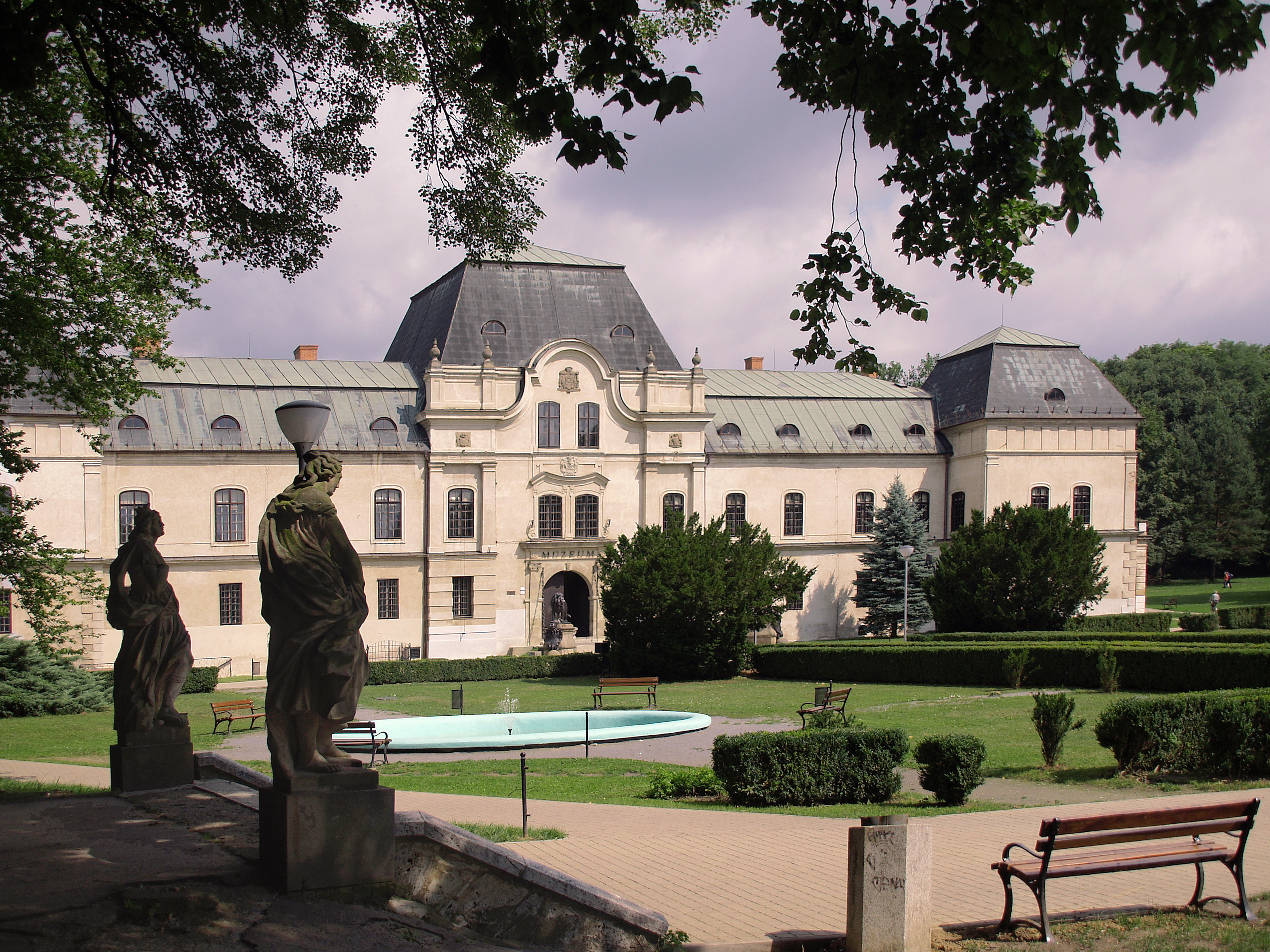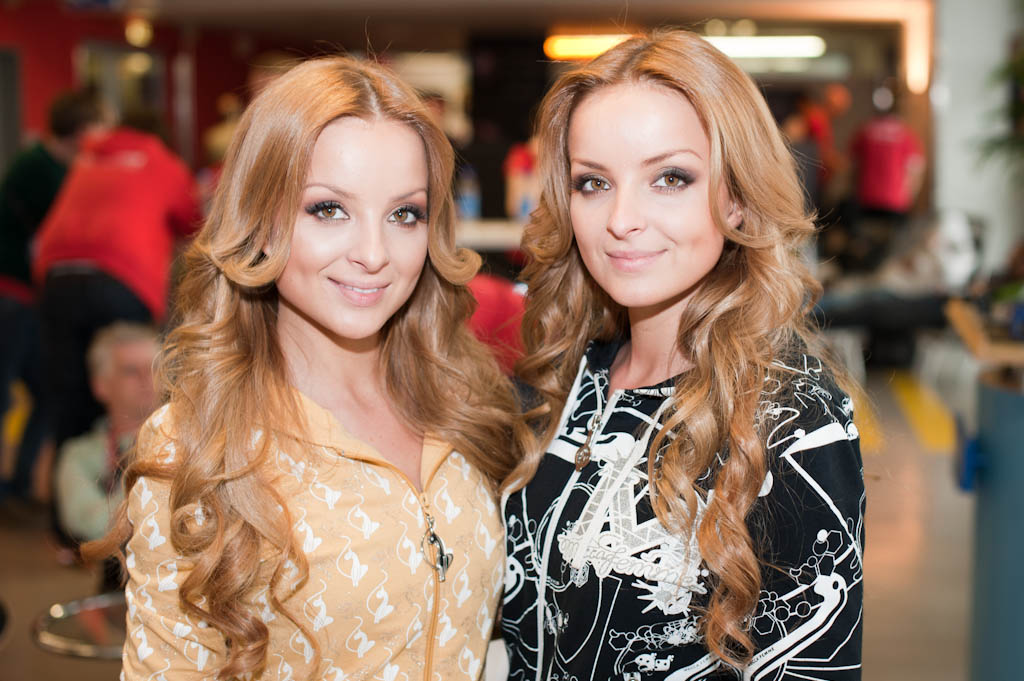|
Marcel Palonder
Marcel Palonder (born 3 February 1964 in Humenné, Czechoslovakia) is a Slovak singer. He represented his country in the Eurovision Song Contest 1996 with the song " Kým nás máš". His song qualified from the semifinal, earning 36 points but in the final it placed 18th place with 19 points. The points to the Slovak entry were given by: Greece four points, Malta eight points, Poland five points and Spain two points. He attempted to represent his country once again at Eurovision in 2010, when he competed in the Slovak quarter-finals of Eurosong 2010 with the song "What About You", but failed reaching the semi-finals. See also * The 100 Greatest Slovak Albums of All Time The 100 Greatest Slovak Albums of All Time is a list of the best album releases issued by Slovak recording artists. As the first such list presented in Slovakia, it was published by '' Nový čas'' daily on 22 September 2007. The list is entirely ... References {{DEFAULTSORT:Palonder, Marcel Living ... [...More Info...] [...Related Items...] OR: [Wikipedia] [Google] [Baidu] |
Humenné
Humenné (; hu, Homonna; ukr, Гуменне) is a town in the Prešov Region ("kraj") in eastern Slovakia and the second largest town of the historic Zemplín region. It lies at the volcanic Vihorlat mountains and at the confluence of the Laborec and Cirocha Rivers. Names and etymology The name comes from a common Slavic word "humno" (gumьno). In Slovak "backyard", the exact meaning may differ in dialects. Initially, a female adjective (1322 ''Homonna'', 1332 ''Humenna'', 1381 ''Humenna'', 1391 ''Humonna'') then neutrum ''Humenné''. Landmarks Humenné is a center of one of the easternmost districts ("okres") in Slovakia. The most attractive places are the Vihorlat Mountains boasting of their Morské oko lake, and the Bukovské vrchy (section of the Bieszczady Mountains) at the border of Slovakia, Poland, and Ukraine, which are part of the Poloniny National Park. Humenné is surrounded by ruins of medieval castles and an open-air museum of architecture situated in the ... [...More Info...] [...Related Items...] OR: [Wikipedia] [Google] [Baidu] |
Nekonečná Pieseň
The Eurovision Song Contest 1994 was the 39th edition of the Eurovision Song Contest. It took place in Dublin, Ireland, following the country's victory at the with the song "In Your Eyes" by Niamh Kavanagh. It was the first time that any country had hosted the contest two years in a row. Organised by the European Broadcasting Union (EBU) and host broadcaster (RTÉ), the contest was held at the Point Theatre on 30 April 1994. It was presented by Irish television and radio presenters Cynthia Ní Mhurchú and Gerry Ryan. This remains the last time that the contest has not been held in the month of May. Twenty-five countries participated in the contest, equalling the record of the 1993 edition. A total of seven countries took part in the contest for the first time; Estonia, Hungary, Lithuania, Poland, Romania, Russia and Slovakia. To cope with the increasing number of countries wishing to participate in the contest, the EBU ruled that the seven lowest-placed countries from the prece ... [...More Info...] [...Related Items...] OR: [Wikipedia] [Google] [Baidu] |
People From Humenné
A person ( : people) is a being that has certain capacities or attributes such as reason, morality, consciousness or self-consciousness, and being a part of a culturally established form of social relations such as kinship, ownership of property, or legal responsibility. The defining features of personhood and, consequently, what makes a person count as a person, differ widely among cultures and contexts. In addition to the question of personhood, of what makes a being count as a person to begin with, there are further questions about personal identity and self: both about what makes any particular person that particular person instead of another, and about what makes a person at one time the same person as they were or will be at another time despite any intervening changes. The plural form "people" is often used to refer to an entire nation or ethnic group (as in "a people"), and this was the original meaning of the word; it subsequently acquired its use as a plural form of per ... [...More Info...] [...Related Items...] OR: [Wikipedia] [Google] [Baidu] |
Eurovision Song Contest Entrants Of 1996
The Eurovision Song Contest (), sometimes abbreviated to ESC and often known simply as Eurovision, is an international songwriting competition organised annually by the European Broadcasting Union (EBU), featuring participants representing primarily European countries. Each participating country submits an original song to be performed on live television and radio, transmitted to national broadcasters via the EBU's Eurovision and Euroradio networks, with competing countries then casting votes for the other countries' songs to determine a winner. Based on the Sanremo Music Festival held in Italy since 1951, Eurovision has been held annually since 1956 (apart from ), making it the longest-running annual international televised music competition and one of the world's longest-running television programmes. Active members of the EBU, as well as invited associate members, are eligible to compete, and 52 countries have participated at least once. Each participating broadcaster sen ... [...More Info...] [...Related Items...] OR: [Wikipedia] [Google] [Baidu] |
Eurovision Song Contest Entrants For Slovakia
The Eurovision Song Contest (), sometimes abbreviated to ESC and often known simply as Eurovision, is an international songwriting competition organised annually by the European Broadcasting Union (EBU), featuring participants representing primarily European countries. Each participating country submits an original song to be performed on live television and Live radio, radio, transmitted to national broadcasters via the EBU's Eurovision (network), Eurovision and Euroradio networks, with competing countries then casting votes for the other countries' songs to determine a winner. Based on the Sanremo Music Festival held in Italy since 1951, Eurovision has been held annually since 1956 (apart from ), making it the longest-running annual international televised music competition and one of the world's longest-running television programmes. Active members of the EBU, as well as invited associate members, are eligible to compete, and List of countries in the Eurovision Song Contest ... [...More Info...] [...Related Items...] OR: [Wikipedia] [Google] [Baidu] |
Living People
Related categories * :Year of birth missing (living people) / :Year of birth unknown * :Date of birth missing (living people) / :Date of birth unknown * :Place of birth missing (living people) / :Place of birth unknown * :Year of death missing / :Year of death unknown * :Date of death missing / :Date of death unknown * :Place of death missing / :Place of death unknown * :Missing middle or first names See also * :Dead people * :Template:L, which generates this category or death years, and birth year and sort keys. : {{DEFAULTSORT:Living people 21st-century people People by status ... [...More Info...] [...Related Items...] OR: [Wikipedia] [Google] [Baidu] |
Modlitba (song)
Slovakia participated in the Eurovision Song Contest 1998 in Birmingham, UK with the song " Modlitba" written by Gabriel Dušík and Anna Wepperyová. The song was performed by Katarína Hasprová. The Slovak entry for the 1998 contest was selected through the music competition Bratislavská lýra, organised by the Slovak broadcaster STV. The competition was held on 7 June 1997 where Katarína Hasprová eventually emerged as the winner. The song Hasprová performed at the Eurovision Song Contest, "Modlitba", was internally selected and was released on 9 March. Background Prior to the , Slovakia had participated in the Eurovision Song Contest 2 times since its first entry in 1994. Slovakia missed the 1993 contest when its selected song "Amnestia na neveru" by band Elán failed to qualify for the contest due to the fact that entry scored an insufficient number of points in a special qualifying round entitled "Kvalifikacija za Millstreet". To this point, the country's best pla ... [...More Info...] [...Related Items...] OR: [Wikipedia] [Google] [Baidu] |
Katarína Hasprová
Katarína Hasprová (born 10 September 1972 in Bratislava) is a Slovak singer, best known internationally for representing her country at the Eurovision Song Contest 1998 with the song "". Hasprová was born into a musical family. Her mother, Soňa Valentová, was a well-known Slovak actress and singer, and her father, , is a leading theatre and television director. A graduate in music from the Janáček Academy of Performing Arts, Hasprová devotes all her time to singing and dancing and has performed in a number of classic musicals, including ''West Side Story'' and '' Hair''. See also * The 100 Greatest Slovak Albums of All Time The 100 Greatest Slovak Albums of All Time is a list of the best album releases issued by Slovak recording artists. As the first such list presented in Slovakia, it was published by '' Nový čas'' daily on 22 September 2007. The list is entirely ... References * 1972 births Living people Musicians from Bratislava 20th-century ... [...More Info...] [...Related Items...] OR: [Wikipedia] [Google] [Baidu] |
Slovakia In The Eurovision Song Contest
Slovakia has participated in the Eurovision Song Contest seven times, debuting in 1994. It had attempted to debut in 1993, but did not pass through the qualifying round. In the first three finals that Slovakia participated in, it placed no better than 18th, which it achieved in 1996. Because of its poor results, Slovakia was relegated in 1995 and 1997, and eventually withdrew in 1999. The country returned in 2009, although they withdrew again within four years, having failed to qualify for the final every year since their return. History Before participation During the time of Czechoslovakia, (ČST) is known to have broadcast a number of editions of the contest in Czechoslovakia during the 1960s, 1970s, 1980s and early 1990s. Karel Gott, one of the most popular Czechoslovakian artist, represented Austria in the 1968 contest, held in London, United Kingdom. Furthermore, the Prague Theatre of Illuminated Drawings from the Czech capital performed as interval act in the 1984 contes ... [...More Info...] [...Related Items...] OR: [Wikipedia] [Google] [Baidu] |
Tublatanka
Tublatanka is a Slovakia, Slovak rock band formed in the autumn of 1982 in Bratislava, Slovakia, best known for the hits "Pravda víťazí" (The Truth Prevails) and "Dnes" (Today). The band's classic lineup consisted of Maťo Ďurinda (also known as Martin Durinda), Palo Horváth, and Juraj "Ďuro" Černý from 1982 to 1992. In 1992, Palo exited the band, leaving Maťo and Ďuro to record their 1993 album with Maťo composing guitar and bass melodies. Ďuro left the band in 1995 due to complications with drugs. Currently, the band consists of Maťo Ďurinda, Juraj Topor, and Peter Schlosser. Biography Early years Tublatanka was formed in 1982 in Bratislava, Slovakia, by Martin "Maťo" Ďurinda, Palo Horváth, and Ďuro Černý. Ďurinda was a student at Comenius University in Bratislava at the time, where he met drummer Ďuro Černý in a wine bar called Veľkí Františkáni through a friend. The two talked about their favorite bands such as Led Zeppelin, Deep Purple, Thin Lizzy ... [...More Info...] [...Related Items...] OR: [Wikipedia] [Google] [Baidu] |
Czechoslovakia
, rue, Чеськословеньско, , yi, טשעכאסלאוואקיי, , common_name = Czechoslovakia , life_span = 1918–19391945–1992 , p1 = Austria-Hungary , image_p1 = , s1 = Czech Republic , flag_s1 = Flag of the Czech Republic.svg , s2 = Slovakia , flag_s2 = Flag of Slovakia.svg , image_flag = Flag of Czechoslovakia.svg , flag = Flag of Czechoslovakia , flag_type = Flag(1920–1992) , flag_border = Flag of Czechoslovakia , image_coat = Middle coat of arms of Czechoslovakia.svg , symbol_type = Middle coat of arms(1918–1938 and 1945–1961) , image_map = Czechoslovakia location map.svg , image_map_caption = Czechoslovakia during the interwar period and the Cold War , national_motto = , anthems = ... [...More Info...] [...Related Items...] OR: [Wikipedia] [Google] [Baidu] |

_1938.jpg)
.png)
